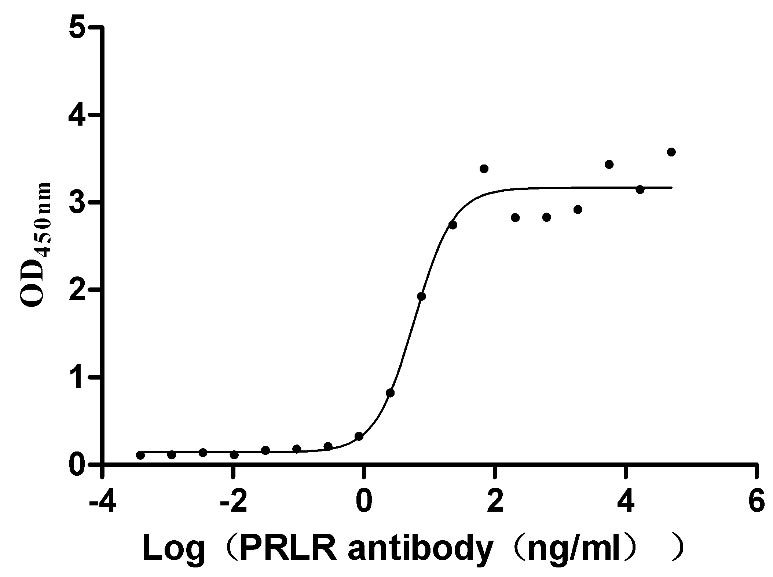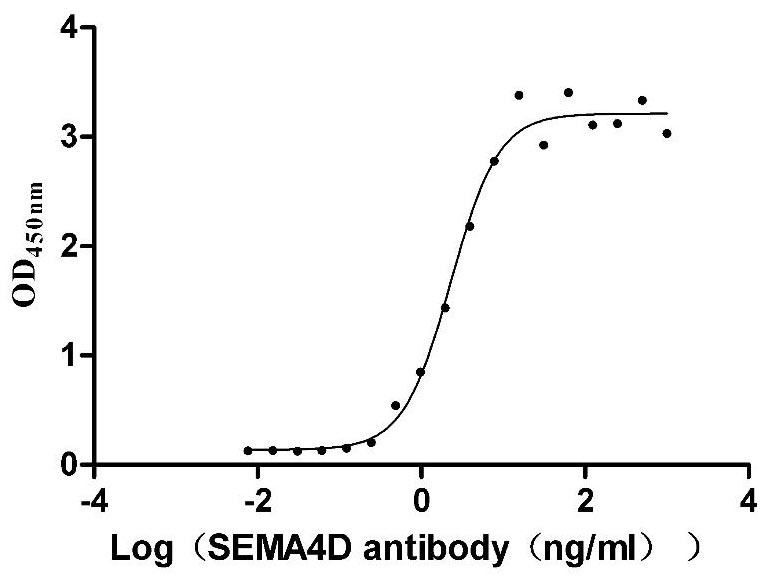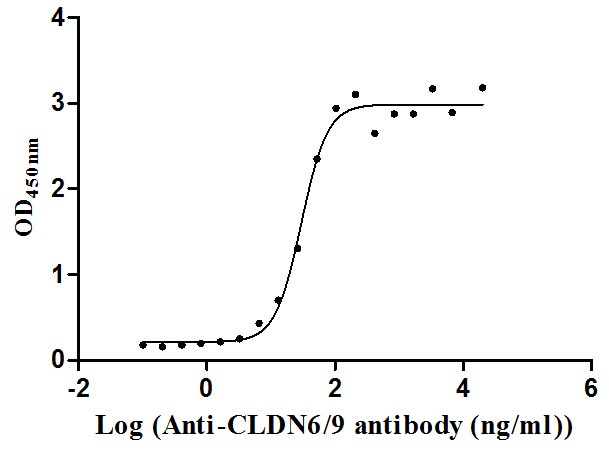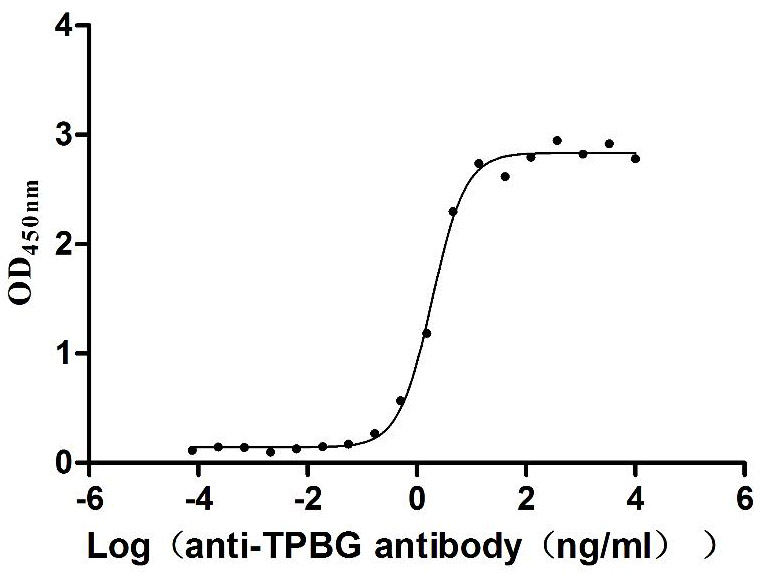Recombinant Human Amyloid beta precursor like protein 2 (APLP2 APPL2)
-
中文名稱:
-
貨號:CSB-EP001912HU-B
-
說明書:
-
規格:
-
來源:E.coli
-
共軛:Avi-tag Biotinylated
E. coli biotin ligase (BirA) is highly specific in covalently attaching biotin to the 15 amino acid AviTag peptide. This recombinant protein was biotinylated in vivo by AviTag-BirA technology, which method is BriA catalyzes amide linkage between the biotin and the specific lysine of the AviTag.
-
其他:
產品詳情
-
純度:>85% (SDS-PAGE)
-
基因名:
-
Uniprot No.:
-
別名:Amyloid beta precursor like protein 2; APPH; Amyloid beta; A4; precursor-like protein 2; Amyloid protein homolog; Amyloid-like protein 2; APLP-2; CDEI box-binding protein; CDEBP; Sperm membrane protein YWK-II; APLP2 APPL2
-
種屬:Homo sapiens (Human)
-
蛋白標簽:Tag?type?will?be?determined?during?the?manufacturing?process.
The tag type will be determined during production process. If you have specified tag type, please tell us and we will develop the specified tag preferentially. -
產品提供形式:Liquid or Lyophilized powder
Note: We will preferentially ship the format that we have in stock, however, if you have any special requirement for the format, please remark your requirement when placing the order, we will prepare according to your demand. -
復溶:We recommend that this vial be briefly centrifuged prior to opening to bring the contents to the bottom. Please reconstitute protein in deionized sterile water to a concentration of 0.1-1.0 mg/mL.We recommend to add 5-50% of glycerol (final concentration) and aliquot for long-term storage at -20℃/-80℃. Our default final concentration of glycerol is 50%. Customers could use it as reference.
-
儲存條件:Store at -20°C/-80°C upon receipt, aliquoting is necessary for mutiple use. Avoid repeated freeze-thaw cycles.
-
保質期:The shelf life is related to many factors, storage state, buffer ingredients, storage temperature and the stability of the protein itself.
Generally, the shelf life of liquid form is 6 months at -20°C/-80°C. The shelf life of lyophilized form is 12 months at -20°C/-80°C. -
貨期:Delivery time may differ from different purchasing way or location, please kindly consult your local distributors for specific delivery time.Note: All of our proteins are default shipped with normal blue ice packs, if you request to ship with dry ice, please communicate with us in advance and extra fees will be charged.
-
注意事項:Repeated freezing and thawing is not recommended. Store working aliquots at 4°C for up to one week.
-
Datasheet :Please contact us to get it.
相關產品
靶點詳情
-
功能:May play a role in the regulation of hemostasis. The soluble form may have inhibitory properties towards coagulation factors. May interact with cellular G-protein signaling pathways. May bind to the DNA 5'-GTCACATG-3'(CDEI box). Inhibits trypsin, chymotrypsin, plasmin, factor XIA and plasma and glandular kallikrein. Modulates the Cu/Zn nitric oxide-catalyzed autodegradation of GPC1 heparan sulfate side chains in fibroblasts.
-
基因功能參考文獻:
- the expression of APLP2 might correlate with tumor development and be a prognostic factor for patients with glioblastoma PMID: 29663738
- These findings suggest that the identified APLP2, RRM2, and PRC1 signature could be useful for distinguishing between benign (follicular adenoma) and malignant (follicular carcionma and follicular variant of papillary carcinoma) tumors of the thyroid follicular epithelium. PMID: 27796194
- This paper demonstrates an important role for APLP2 in refractive development in mice and humans, suggesting a high level of evolutionary conservation of the signaling pathways underlying refractive eye development. PMID: 26313004
- Data show that amyloid precursor-like protein 2 (APLP2) expression is elevated in pancreatic cancer metastases. PMID: 25576918
- We conclude that PCSK9 enhances the degradation of the LDLR independently of either APLP2 or sortilin both ex vivo and in mice. PMID: 26085104
- our discoveries establish a role for APLP2 in the growth of pancreatic cancer cells and show that inhibitors preventing APLP2 cleavage reduce the viability of pancreatic cancer cells. PMID: 22797723
- amyloid precursor protein-like protein-2, but not amyloid precursor protein, is involved in mediating postendocytic delivery of PCSK9 to lysosomes and is therefore important for PCSK9 function PMID: 23430252
- Aberrant enhancement of YWK-II/APLP2 by nuclear export of Bat3 may play a role in cancer development by inhibiting cell apoptosis. PMID: 22641691
- APP and its mammalian homologs, amyloid precursor-like proteins APLP1 and APLP2, participate under physiological conditions via trans-cellular dimerization in synaptogenesis. PMID: 21952790
- APLP-2 (and APLP1) are capable of activating gene transcription via binding to Mint3. PMID: 21178287
- Regulation of major histocompatibility complex class I molecule expression on cancer cells by amyloid precursor-like protein 2. PMID: 21826533
- The interaction between APLP2 and ataxin-7 and proteolytic processing of APLP2 may contribute to the pathogenesis of spinocerebellar ataxia type 7. PMID: 20732423
- APLP1 and APLP2 are processed by the gamma-secretase in a Presenilin 1-dependent manner and the extreme carboxyl-terminal fragments produced by this processing (APP-like Intracellular Domain are able to enhance Fe65-dependent gene activation PMID: 12228233
- crystals of extracellular fragment X3 of a human sperm membrane protein YWK-II/APPH have been grow by the vapour-diffusion method [YWK-II PROTEIN] PMID: 12595709
- Sustained levels of APP and the elevated levels of APLP2, in spite of the reduced mRNA expression, are due to altered proteolytic processing of these proteins. PMID: 14597230
- The APLP2 gene has no CAGA box, but it does have a GAGA sequence in a location similar to that of the CAGA box in the APP gene. PMID: 15208260
- Interaction of human and murine Abeta peptides, Abeta40 and Abeta42. Interspecies Abeta aggregates and fibres are readily formed and are more stable than homogenous human fibres. (Amyloid beta 40 and 42) PMID: 15584916
- APLP2 is shed by disintegrins and metalloproteinases. Overexpression of secretase or TACE in HEK293 cells increases the release of neurotrophic soluble APLP2 severalfold. PMID: 16279945
- findings show an increase in the immunoreactivities for the nuclear C-terminal fragments of APLP2 and for GSK-3beta in the brains of Alzheimer disease patients PMID: 16645641
- APLP2 and APP have roles in sperm function PMID: 17405931
- YWK-II (APLP2 protein) is a G(o)-coupled receptor for Mullerian inhibiting substance in mediating ERK1/2 activation leading to anti-apoptotic activity or cell survival. PMID: 17452623
- APLP2/MHC association is influenced by multiple domains of the MHC class I heavy chain and by beta(2)m's effects on the conformation of the heavy chain. PMID: 18452037
- APLP2 modulates the stability and endocytosis of K(d) molecules PMID: 18641335
- APLP2 has a multistep trafficking function that influences the expression of major histocompatibility complex class I molecules at the plasma membrane PMID: 19808674
顯示更多
收起更多
-
亞細胞定位:Cell membrane; Single-pass type I membrane protein. Nucleus.
-
蛋白家族:APP family
-
組織特異性:Expressed in placenta, brain, heart, lung, liver, kidney and endothelial tissues.
-
數據庫鏈接:
Most popular with customers
-
Recombinant Human Pro-neuregulin-1, membrane-bound isoform (NRG1), partial (Active)
Express system: Mammalian cell
Species: Homo sapiens (Human)
-
Recombinant Macaca fascicularis Delta-like protein 3 (DLL3), partial (Active)
Express system: Mammalian cell
Species: Macaca fascicularis (Crab-eating macaque) (Cynomolgus monkey)
-
Recombinant Human Glucagon receptor (GCGR), partial (Active)
Express system: Mammalian cell
Species: Homo sapiens (Human)
-
Recombinant Human T-cell surface protein tactile (CD96), partial (Active)
Express system: Mammalian cell
Species: Homo sapiens (Human)
-
Recombinant Mouse Prolactin receptor (Prlr), partial (Active)
Express system: Mammalian cell
Species: Mus musculus (Mouse)
-
Recombinant Macaca mulatta Semaphorin-4D isoform 1 (SEMA4D), partial (Active)
Express system: Mammalian cell
Species: Macaca mulatta (Rhesus macaque)
-
Recombinant Human Claudin-9 (CLDN9)-VLPs (Active)
Express system: Mammalian cell
Species: Homo sapiens (Human)
-
Recombinant Macaca fascicularis Trophoblast glycoprotein (TPBG), partial (Active)
Express system: Mammalian cell
Species: Macaca fascicularis (Crab-eating macaque) (Cynomolgus monkey)


-AC1.jpg)
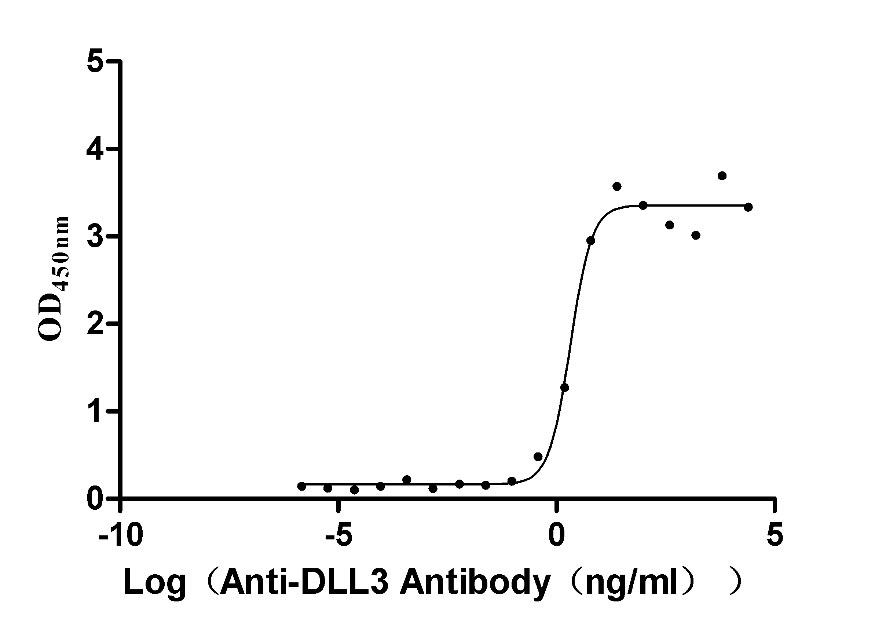
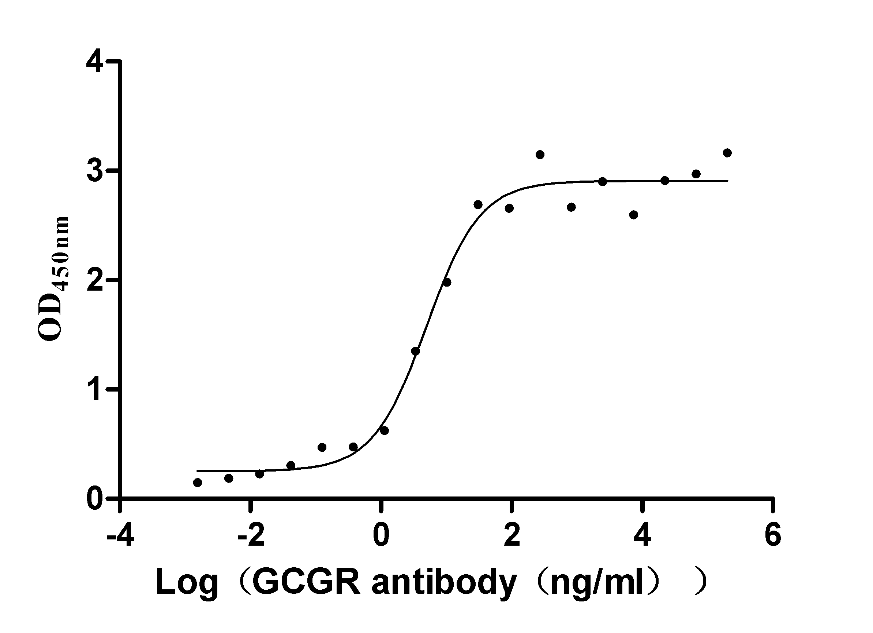
-AC1.jpg)
